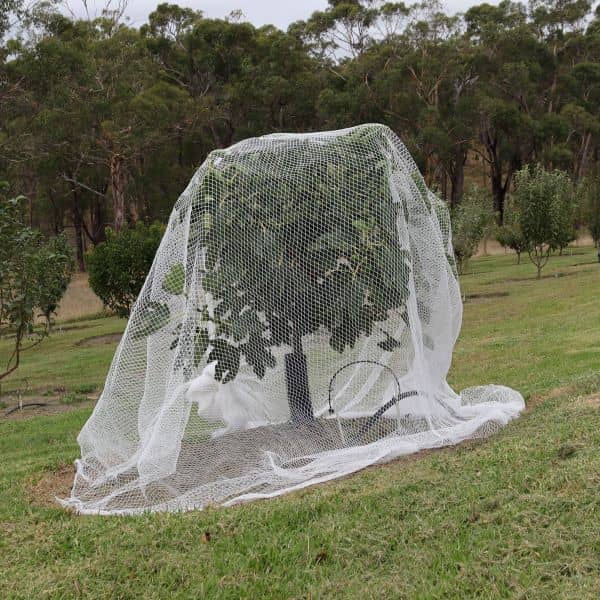When it comes to protecting your crops and garden from avian invaders, two primary methods stand out: anti-bird netting and scare techniques. Both approaches have their merits, but which is more effective?
 In this comprehensive guide, we’ll compare the pros and cons of bird netting for fruit trees and scare devices to help you make an informed choice for safeguarding your precious harvest.
In this comprehensive guide, we’ll compare the pros and cons of bird netting for fruit trees and scare devices to help you make an informed choice for safeguarding your precious harvest.
Anti bird netting
Anti-bird netting is a physical barrier designed to keep birds away from your plants and fruits. It comes in various forms, including lightweight mesh nets and sturdy, long-lasting options suitable for large orchards and farms.
Advantages
- Comprehensive Protection: Anti-bird netting creates a complete shield around your crops, effectively preventing birds from accessing them. It’s particularly useful for fruit trees and vegetable gardens.
- Longevity: Quality netting can last for several seasons, making it a cost-effective solution in the long run.
- Minimal Maintenance: Once installed, anti-bird netting requires little maintenance.
- No Harm to Birds: Unlike scare devices, anti-bird netting doesn’t harm birds. It simply keeps them out of your garden.
- Reduces Pest Problems: Besides protecting against birds, anti-bird netting can also deter other pests like insects and rodents.
Disadvantages
- Installation Challenges: Setting up anti-bird netting can be time-consuming and expensive, especially for larger areas or custom-shaped gardens.
- Visual Obstruction: Depending on the net’s mesh size, it might somewhat obstruct your view of the plants.
Scare Devices
Scare devices are designed to startle and discourage birds from landing or nesting in your garden. Common scare devices include scarecrows, reflective tape, noise-making devices, and even predator decoys. Let’s explore their pros and cons:
Advantages
- Low Initial Cost: Most scare devices are affordable and require minimal investment.
- Easy to Install: Setting up scare devices is usually quick and straightforward.
- Low Maintenance: Scare devices, once installed, typically require little maintenance.
- Visual Deterrence: Some devices, like reflective tape, create visual disturbances that can keep birds away.
Disadvantages
- Limited Effectiveness: Scare devices often have limited success in deterring birds, especially in the long term. Birds can become accustomed to them.
- Reliance on Weather: Many scare devices, like noise-making ones, are weather-dependent. They might not be effective in calm conditions.
- Nocturnal Limitation: Scare devices are ineffective during the night when many birds feed or cause damage.
- Ethical Concerns: Some scare devices can be seen as inhumane, as they attempt to frighten birds rather than protect your crops without causing harm.
- Constant Supervision: To be effective, scare devices may require constant adjustments and changes, which can be time-consuming.
Which is more effective?
Anti-bird netting is a clear winner as you get better protection without harming the birds. It provides comprehensive, long-lasting protection, requires minimal maintenance, and doesn’t harm birds. Scare devices may have a role to play in certain situations but are generally less effective in the long term.
At Sage Horticultural, you can buy the best quality anti-bird netting. Get in touch with us if you need help with your specific needs.